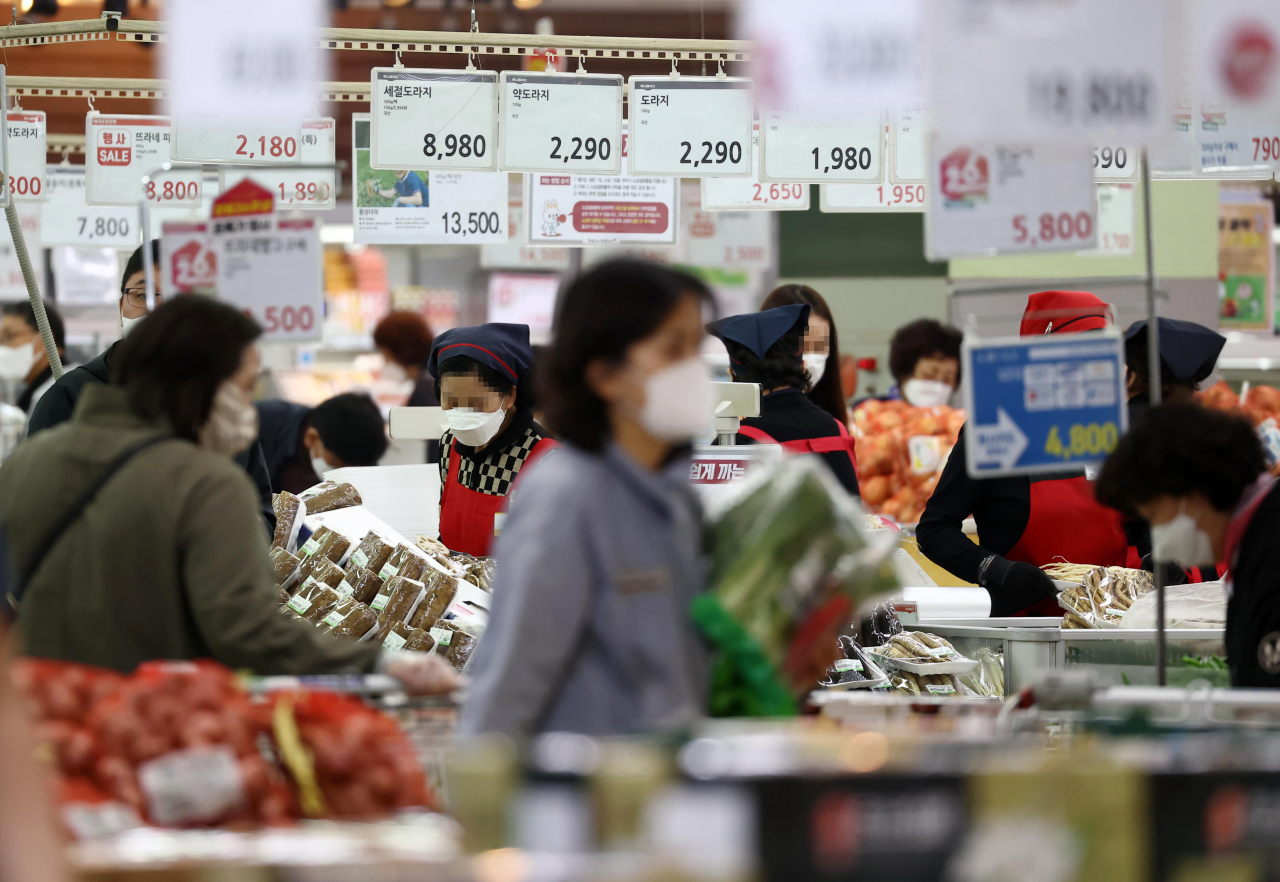
South Koreans are experiencing greater economic pain in recent months, largely due to soaring consumer prices and higher unemployment rates amid the prolonged COVID-19 pandemic, data showed Thursday.
The nation’s so-called misery perceptions index, calculated by adding the seasonally adjusted jobless rate to the annual inflation rate, stood at 6.6 in May, sharply up from 4.2 estimated a year earlier. The latest figure marked the highest since May 2011 when it hit 7.1, said Rep. Choo Kyung-ho of the main opposition People Power Party, quoting data compiled by Statistics Korea.
Last month’s consumer prices rose by 2.6 percent on-year, the sharpest gain in nine years, while the unemployment rate hit nearly 4 percent as businesses, especially in service sectors, cut hiring on sluggish demand affected by the coronavirus situation.
The misery index, which measures how people actually feel about economic distress, was originally developed by Arthur Okun, an economist from the Brookings Institute, in the 1960s.
“Amid the prolonged COVID-19 pandemic, South Koreans are facing intensifying economic difficulties. The government should urgently come up with measures to reduce the jobless rate for youths and seniors, while minimizing the growth of farm product prices as well as food prices,” Choo said.
If the misery index were calculated on the basis of the country’s de facto jobless rate -- called the extended-based jobless rate, which stood at 13.5 percent in the same month while the consumer price index for basic necessities was 3.3 percent -- the misery index would be 16.8, the highest since 2015. The figure has risen greatly from 12.9 in 2019 and 13.9 in 2020.
The extended-based jobless rate includes numbers of underemployed people, as well as unemployed people, within the economically active population.
By Choi Jae-hee (cjh@heraldcorp.com)
The nation’s so-called misery perceptions index, calculated by adding the seasonally adjusted jobless rate to the annual inflation rate, stood at 6.6 in May, sharply up from 4.2 estimated a year earlier. The latest figure marked the highest since May 2011 when it hit 7.1, said Rep. Choo Kyung-ho of the main opposition People Power Party, quoting data compiled by Statistics Korea.
Last month’s consumer prices rose by 2.6 percent on-year, the sharpest gain in nine years, while the unemployment rate hit nearly 4 percent as businesses, especially in service sectors, cut hiring on sluggish demand affected by the coronavirus situation.
The misery index, which measures how people actually feel about economic distress, was originally developed by Arthur Okun, an economist from the Brookings Institute, in the 1960s.
“Amid the prolonged COVID-19 pandemic, South Koreans are facing intensifying economic difficulties. The government should urgently come up with measures to reduce the jobless rate for youths and seniors, while minimizing the growth of farm product prices as well as food prices,” Choo said.
If the misery index were calculated on the basis of the country’s de facto jobless rate -- called the extended-based jobless rate, which stood at 13.5 percent in the same month while the consumer price index for basic necessities was 3.3 percent -- the misery index would be 16.8, the highest since 2015. The figure has risen greatly from 12.9 in 2019 and 13.9 in 2020.
The extended-based jobless rate includes numbers of underemployed people, as well as unemployed people, within the economically active population.
By Choi Jae-hee (cjh@heraldcorp.com)








![[Kim Seong-kon] Democracy and the future of South Korea](http://res.heraldm.com/phpwas/restmb_idxmake.php?idx=644&simg=/content/image/2024/04/16/20240416050802_0.jpg&u=)








![[KH Explains] Hyundai's full hybrid edge to pay off amid slow transition to pure EVs](http://res.heraldm.com/phpwas/restmb_idxmake.php?idx=652&simg=/content/image/2024/04/18/20240418050645_0.jpg&u=20240418181020)

![[Today’s K-pop] Zico drops snippet of collaboration with Jennie](http://res.heraldm.com/phpwas/restmb_idxmake.php?idx=642&simg=/content/image/2024/04/18/20240418050702_0.jpg&u=)